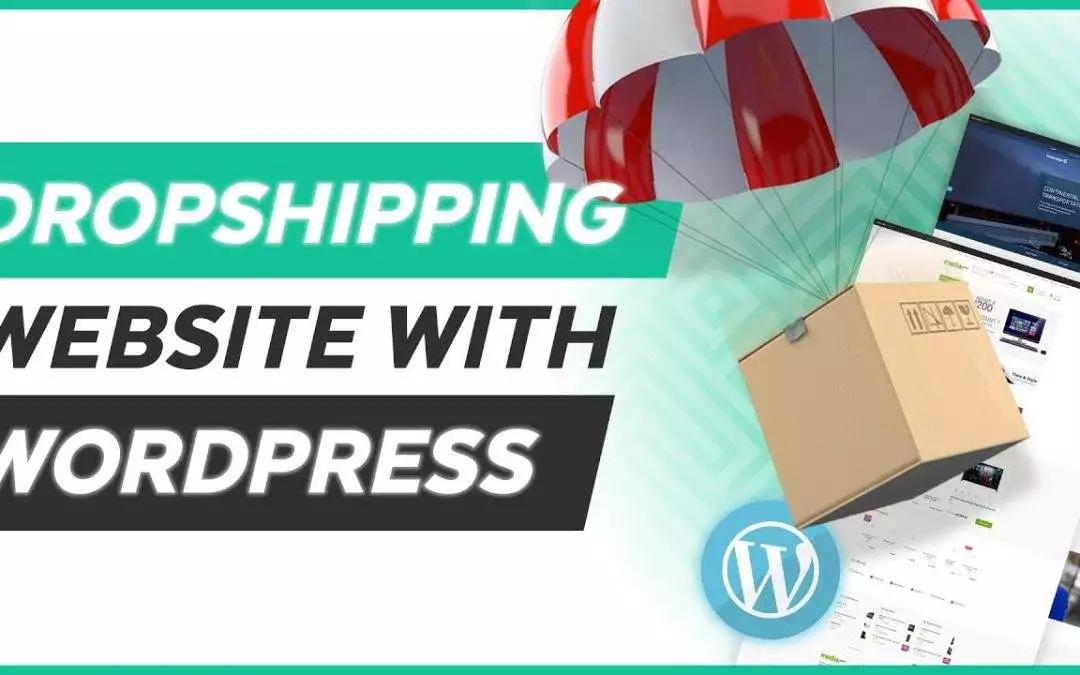
Starting a dropshipping business on WordPress is an excellent way to enter the world of e-commerce with minimal upfront investment. By leveraging the power of WordPress and WooCommerce, entrepreneurs can create an automated online store without the need for inventory management. This guide will walk you through the step-by-step process of setting up a successful dropshipping business using WordPress.
Why Choose WordPress for Dropshipping?
WordPress, combined with WooCommerce, offers a flexible and cost-effective platform for building and managing an online store. Here’s why it’s a great choice for dropshipping:
-
Cost-Effective: No need to invest in physical inventory.
-
Customizability: Thousands of themes and plugins to personalize your store.
-
SEO Friendly: WordPress makes it easy to optimize your store for search engines.
-
Wide Plugin Support: Seamless integrations with popular dropshipping suppliers.
Step 1: Choose a Niche and Find Suppliers
Before setting up your store, choose a niche that aligns with market demand and your interests.
How to Select a Niche:
-
Research trending products using tools like Google Trends and AliExpress.
-
Ensure profitability by analyzing competition and demand.
-
Pick a niche that allows for branding opportunities and long-term growth.
Research trending products using tools like Google Trends and AliExpress.
Ensure profitability by analyzing competition and demand.
Pick a niche that allows for branding opportunities and long-term growth.
Finding Suppliers:
-
Use platforms like AliExpress, Spocket, or Modalyst for supplier integration.
-
Check supplier ratings, shipping times, and customer reviews.
-
Establish good communication with suppliers to ensure product quality and reliability.
Use platforms like AliExpress, Spocket, or Modalyst for supplier integration.
Check supplier ratings, shipping times, and customer reviews.
Establish good communication with suppliers to ensure product quality and reliability.
Step 2: Set Up WordPress and WooCommerce
To start your dropshipping store, you’ll need a WordPress website with WooCommerce installed.
Install WordPress:
-
Choose a reliable hosting provider like SiteGround, Bluehost, or Cloudways.
-
Register a domain name that reflects your brand.
-
Install WordPress through your hosting dashboard.
Choose a reliable hosting provider like SiteGround, Bluehost, or Cloudways.
Register a domain name that reflects your brand.
Install WordPress through your hosting dashboard.
Install and Configure WooCommerce:
-
Go to Plugins > Add New and search for WooCommerce.
-
Click Install Now and then Activate.
-
Follow the setup wizard to configure currency, payment gateways, and shipping options.
Go to Plugins > Add New and search for WooCommerce.
Click Install Now and then Activate.
Follow the setup wizard to configure currency, payment gateways, and shipping options.
Step 3: Install a Dropshipping Plugin
To automate order fulfillment, you need a dropshipping plugin that connects your store with suppliers.
Recommended Dropshipping Plugins:
-
AliDropship – Ideal for importing AliExpress products seamlessly.
-
Spocket – Offers high-quality products with fast shipping.
-
Dropified – Automates order management and tracking.
-
Printful – Perfect for print-on-demand dropshipping.
AliDropship – Ideal for importing AliExpress products seamlessly.
Spocket – Offers high-quality products with fast shipping.
Dropified – Automates order management and tracking.
Printful – Perfect for print-on-demand dropshipping.
How to Install a Plugin:
-
Go to Plugins > Add New in your WordPress dashboard.
-
Search for the plugin (e.g., Spocket) and click Install Now.
-
Activate the plugin and follow the setup instructions.
Go to Plugins > Add New in your WordPress dashboard.
Search for the plugin (e.g., Spocket) and click Install Now.
Activate the plugin and follow the setup instructions.
Step 4: Customize Your Store
Choosing a Theme:
Select a responsive WooCommerce-compatible theme to enhance user experience.
-
Astra – Lightweight and highly customizable.
-
Flatsome – Ideal for e-commerce stores with beautiful design elements.
-
Storefront – The official WooCommerce theme for seamless integration.
Customization Tips:
-
Use the Customizer to adjust branding elements (logo, colors, typography).
-
Install Elementor for drag-and-drop page building.
-
Add high-quality product images and compelling descriptions.
Use the Customizer to adjust branding elements (logo, colors, typography).
Install Elementor for drag-and-drop page building.
Add high-quality product images and compelling descriptions.
Step 5: Add Products to Your Store
Once your store is set up, it’s time to add dropshipping products.
Steps to Add Products:
-
Go to Products > Add New in WooCommerce.
-
Enter a compelling product title and description.
-
Upload high-quality product images.
-
Set the price, inventory details, and shipping options.
-
Use your dropshipping plugin to automate product imports.
Go to Products > Add New in WooCommerce.
Enter a compelling product title and description.
Upload high-quality product images.
Set the price, inventory details, and shipping options.
Use your dropshipping plugin to automate product imports.
Optimize Product Listings:
-
Write SEO descriptions using target keywords.
-
Use bullet points to highlight key product features.
-
Include customer reviews and ratings to build trust.
Write SEO descriptions using target keywords.
Use bullet points to highlight key product features.
Include customer reviews and ratings to build trust.
Step 6: Set Up Payment and Shipping Options
Payment Gateways:
WooCommerce supports multiple payment methods. Popular options include:
-
PayPal – A widely used option for international transactions.
-
Stripe – Enables credit/debit card payments.
-
Authorize.net – Secure and reliable for global merchants.
Shipping Settings:
-
Offer free shipping or flat-rate shipping to attract customers.
-
Use your dropshipping plugin to sync real-time shipping rates.
-
Clearly state estimated delivery times to set customer expectations.
Offer free shipping or flat-rate shipping to attract customers.
Use your dropshipping plugin to sync real-time shipping rates.
Clearly state estimated delivery times to set customer expectations.
Step 7: Optimize Your Store for [SEO](https://bkthemes.design/seo)
To drive organic traffic, implement effective SEO strategies.
Essential [SEO](https://bkthemes.design/seo) Tips:
Step 8: Launch and Market Your Store
Once everything is in place, it’s time to attract customers and generate sales.
Marketing Strategies:
-
Social Media Marketing: Promote your products on Facebook, Instagram, and Pinterest.
-
Influencer Collaborations: Partner with niche influencers to reach a targeted audience.
-
Email Marketing: Use Mailchimp or Klaviyo to engage customers with offers.
-
Google Ads & Facebook Ads: Run paid campaigns to drive traffic and conversions.
Social Media Marketing: Promote your products on Facebook, Instagram, and Pinterest.
Influencer Collaborations: Partner with niche influencers to reach a targeted audience.
Email Marketing: Use Mailchimp or Klaviyo to engage customers with offers.
Google Ads & Facebook Ads: Run paid campaigns to drive traffic and conversions.
Step 9: Monitor and Scale Your Business
As your store gains traction, regularly analyze performance and optimize for growth.
Tools for Analytics:
-
Google Analytics – Track traffic sources and user behavior.
-
Facebook Pixel – Measure ad performance and audience engagement.
-
Hotjar – Visualize user interactions with heatmaps and session recordings.
Google Analytics – Track traffic sources and user behavior.
Facebook Pixel – Measure ad performance and audience engagement.
Hotjar – Visualize user interactions with heatmaps and session recordings.
Scaling Strategies:
-
Expand product offerings based on customer demand.
-
Optimize pricing and promotions to increase conversions.
-
Automate email campaigns to boost repeat purchases.
Expand product offerings based on customer demand.
Optimize pricing and promotions to increase conversions.
Automate email campaigns to boost repeat purchases.
Conclusion
Setting up a dropshipping business on WordPress is a rewarding venture when done right. By choosing the right niche, using essential plugins, optimizing for SEO, and leveraging effective marketing strategies, you can create a successful e-commerce store with minimal risk.
With the right tools and persistence, your WordPress-powered dropshipping business can thrive in today’s competitive e-commerce landscape. Start today and watch your business grow!
📧 Stay Updated
Get the latest web development tips and insights delivered to your inbox.




